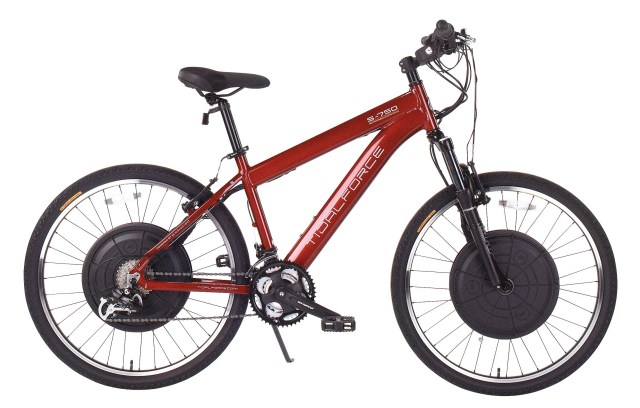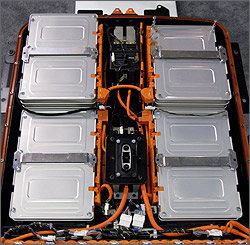 Episode 157: Should I buy batteries for my home?
Episode 157: Should I buy batteries for my home?Venkat Viswanathan, a professor at Carnegie Mellon University, discusses powering homes with batteries, whether they will save consumers money, and where they can best be used.
Listen
Respond
Learn More
Residential Solar Energy Storage Analysis from New York State Energy Research and Development
Battery Power for Your Residential Solar Electric System from the National Renewable Energy Laboratory
Is LG Attempting to Steal the Thunder from Tesla’s Entry into Home Battery Storage? from the Lawrence Berkeley National Labaratory
Transcript
HOST: Have you ever wondered if the home batteries in the news make sense for your home? On this week’s Energy Bite, Venkat Viswanathan, a professor at Carnegie Mellon University, has some answers.
VENKAT: Home batteries are typically used to store energy from a renewable source, such as a solar panel on your roof. When the sun is shining during the day, you can store the excess electricity generated for use later at night. You can also use home batteries to store electricity from the grid in case your power goes out. Current home batteries store about 2.2 kWh. Each battery provides enough power to run your television for about 5 hours. Multiple batteries could extend this time.
HOST: Should I buy home batteries now?
VENKAT: The cost for home batteries are prohibitively high for the average consumer. Two situations where batteries might make sense are for homes with solar power, and states like California and Hawaii where electricity is priced daily. Battery costs are dropping dramatically year after year and very soon, it might reach the price point where this is competitive for all consumers.
HOST: Would you buy a battery for your home? Take our poll, see the results, and ask your energy questions at Energy Bite dot org.
 Episode 156: What are electric bikes?
Episode 156: What are electric bikes?Venkat Viswanathan, a professor at Carnegie Mellon University, discusses how electric bikes work and what they can be used for.
Listen
Respond
Learn More
Intro to EBikes from Grin Technologies
AB-1096 Vehicles: electric bicycles from California Legislative Information
E-Bike Research at Portland State University from Portland State University
Transcript
HOST: Have you heard about electric bikes, and wondered how they work? On this week’s Energy Bite, Venkat Viswanathan, a professor at Carnegie Mellon University, has some answers.
VENKAT: Electric bikes are regular bikes that can operate in two modes — the normal pedal mode that a typical bike uses, and an assist mode where a battery can be used to help you pedal. You might use the assist mode, for example, when going up a big hill or windy conditions. These bikes may also be useful if you become injured or suffer from asthma in providing power when you can’t. E-bikes, as they are called, can go 15 to 20 miles in assist mode before the battery needs to be charged.
HOST: If I want to buy an E-bike, what factors should I consider?
VENKAT: There are two main considerations when you are buying an E-bike. First, how long can the e-bike operate in the assist mode, when the battery is being used. Second, how fast can the E-bike go in the assist mode. Just like pedal-only bikes, the price of E-bikes vary widely. On the low end, you can retrofit an existing bike so that it becomes an E-bike. On the high end are bikes that go really fast, which require use of a premium battery pack. E-bikes can also be rented instead of purchased.
HOST: Would you buy or use an E-bike? Take our poll, see the results, and ask your energy questions at Energy Bite dot org.
 Episode 155: What kind of batteries are used in drones?
Episode 155: What kind of batteries are used in drones?Venkat Viswanathan, a professor at Carnegie Mellon University, discusses how batteries are used to power drones and how battery innovation can improve drone function.
Listen
Respond
Learn More
A Lithium-Air Battery Based on Lithium Superoxide from Argonne National Laboratory
Rechargeable Lithium-Air Batteries from Pacific Northwest Laboratory
Battery Charge Depletion Prediction on an Electric Aircraft from the National Aeronautics and Space Administration
Transcript
HOST: Have you ever wondered how drones are powered? On this week’s Energy Bite, Venkat Viswanathan, a professor at Carnegie Mellon University, has some answers.
VENKAT: Drones are typically powered by lithium polymer batteries, similar to the lithium-ion batteries that are used in laptops, mobile phones, and other electronic devices. Drone batteries do not last long only providing about 25 minutes of flight time and a short lifetime.
HOST: Can drones be powered by something other than lithium ion batteries?
VENKAT: Yes, other options under exploration are gasoline used in a hybrid gas-electric engine and hydrogen fuel cells, which the manufacturers indicate can increase flight time to two hours. Lithium air batteries may also be an option in the future. You might be wondering why you just can’t add more lithium batteries to increase flight time. Adding more batteries, however, is not an option as then the drone is too heavy to fly.
HOST: Do you fly a drone? Would you like your drone to fly longer? Take our poll, see the results, and ask your energy questions at Energy Bite dot org.
 Episode 154: Why do batteries catch fire?
Episode 154: Why do batteries catch fire?Venkat Viswanathan, a professor at Carnegie Mellon University, discusses why lithium ion batteries can catch fire and how these fires can be avoided.
Listen
Respond
Learn More
Making Lithium-Ion Batteries Safer from Lawrence Berkeley National Labaratory
Fire Hazards of Lithium Ion Batteries from the Federal Aviation Administration
PHMSA Issues Hoverboard Safety Advisory from the US Department of Transportation
Transcript
HOST: Have you ever wondered why batteries catch fire? On this week’s Energy Bite, Venkat Viswanathan, a professor at Carnegie Mellon University, has some answers.
VENKAT: The batteries in the news for catching fire are Lithium Ion batteries. These batteries are in many of the electronic devices we use including laptop computers, electric vehicles, and hover boards. Lithium ion batteries are safe when they are in environments with air temperatures ranging from 14 to 104 degrees Fahrenheit. The problem occurs when the battery is in very cold or very hot environments outside of this range.
HOST: How can these battery fires be avoided?
VENKAT: First, think about temperature when you are using a device with a lithium ion battery. Second, only purchase batteries with a failsafe mechanism from a high quality manufacturer, and use the recommended chargers for that battery. Don’t use batteries or chargers from “aftermarket” manufacturers producing lower quality inconsistent batteries. Third, consider using devices powered by nickel-metal hybrid batteries instead of lithium ion.
HOST: Have you ever had a battery catch fire? Take our poll, see the results, and ask your energy questions at Energy Bite dot org.
 Episode 153: How many miles can an electric vehicle go before running out of energy?
Episode 153: How many miles can an electric vehicle go before running out of energy?Venkat Viswanathan, a professor at Carnegie Mellon University, discusses the current range of electric vehicles, how range can be improved with new battery technology, and what problems this new technology may introduce.
Listen
Respond
Learn More
Batteries for Hybrid and Plug In Electric Vehicles from the US Department of Energy
Rechargeable Lithium Air Batteries from Advanced Research Projects Agency- Energy
Hybrid and Plug In Electric Vehicles from the US Department of Energy
Transcript
HOST: Are you thinking about buying an electric car, but worried about how far it can go before it runs out of energy? On this week’s Energy Bite, Venkat Viswanathan, a professor at Carnegie Mellon University, has some answers.
VENKAT: Most electric vehicles today go about 200 miles on a single charge of a lithium ion battery. Consumers, however, want vehicles to go 300 to 500 miles before they are willing to purchase them. If you added enough batteries to a car so it could go 500 miles, however, the battery pack becomes more than half the weight of the car. This reduces the vehicle’s overall energy efficiency, and therefore the benefit of buying an electric car.
HOST: How can an electric vehicle’s range be increased?
VENKAT: One option is to switch from a lithium ion battery to a lithium air battery. These batteries can increase a vehicle’s range up to 500 miles without increasing the vehicle’s weight. The challenge with lithium air batteries is that these batteries do not do so well when you recharge them. These batteries can only last for 10s of cycles and we want the batteries to last much much longer than that.
HOST: Would the range of an electric vehicle influence your decision to buy one? Take our poll, see the results, and ask your energy questions at Energy Bite dot org.
 Energy Bite
Energy Bite 
